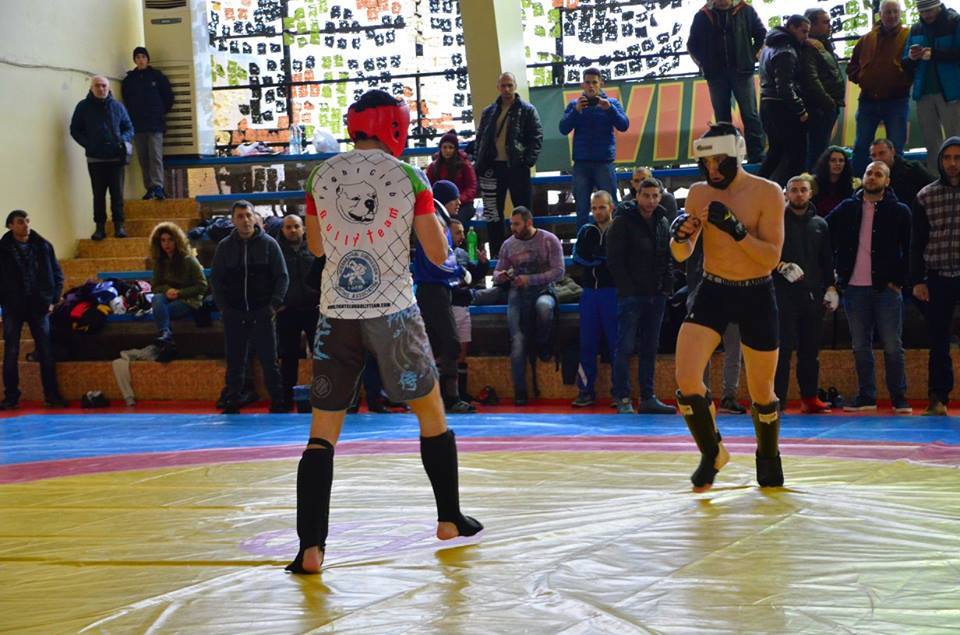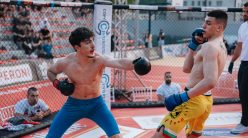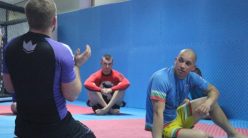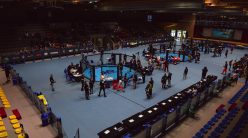I. UNDERSTANDING TACTICS IN SPORT FIGHTING
Under the term “tactics” we understand the ability of a fighter to assess the situation development in a fight and according that to choose most appropriate way to the victory.
Tactics in sport fighting includes the following elements:
- COLLECTING INFORMATION about developing situation at competition
- ANALYZING the received information
- Taking decision or PLANNING ACTIONS
INFORMATION about competition situation is collected using observation and conversations. Analyzing information is done in following directions:
- Information about strengths ratio of the fighters
- Information about conditions of the competition itself
Based on the analysis of the received information is made decision for the most appropriate in certain conditions actions:
– If a fighter has certain superiority over his opponent in any aspect of his game, it is appropriate to choose TACTICS OF OFFENCE.
– If a fighter has the opportunity to fight better than his opponent in certain position, than it is appropriate to choose TACTICS OF MANEUVERING, leading the fight to that very position.
– If a fighter thinks he can lead his opponent into deception and make him perform actions that will help him win, than it is appropriate to choose TACTICS OF HIDING. One can hide his technique (combinations, faints, off balancing, double faints etc.), conditioning preparation, tactics etc.
– Depending from evaluation of strengths ratio it is chosen TACTICS OF OFFENCE or DEFENSE, as well as combination between them.
II. TACTICS TYPES IN SPORT FIGHTING
There are different tactics in sports fighting:
a) OFFENSIVE
- DEFENSIVE
- Combination OFFENSIVE – DEFENSIVE
In order to implement in a fight TACTICS OF OFFENCE, the fighter needs sport specific endurance, in order to carry the intensity, and also to obtain the habits of implementing of the techniques. Usually a fighter obtaining technical superiority over his opponent chooses TACTICS OF OFFENCE. TACTICS OF DEFENSE is chosen from fighters who know that their opponent is superior in technical aspect. Such fighters build their tactics over use of endurance or strength, aiming to build fatigue in the opponent, and then to defeat him. Some fighters combine OFFENSIVE – DEFENSIVE TACTICS in implementing counter techniques. Being DEFENSIVE, the fighter triggers his opponent attack, and that uses his force to implement counter technique.
Putting aside that success in a fight comes only by attack, without good defense it is impossible to defeat the opponent. In every fight happens clash of game plans. If one opponent attacks, the other one have to defend. In only a moment the roles might be changed. Following that understanding it is important to practice both OFFENSIVE and DEFENSIVE TACTICS.
Good method of practicing on training OFFENSIVE and DEFENSIVE TACTICS is Conditional Sparring With One Sided Resistance:
in this drill one fighter for certain time practices attacking techniques, his partner defensive techniques. After this the fighters change their roles.
III. ELEMENTS OF TACTICS IN SPORT FIGHTING
The building elements of tactics in sport fighting are: INTELLIGENCE,
SITUATION ASSESSMENT,
GAME PLANNING,
DECISION TAKING.
Direct INTELLIGENCE allows evaluating technical, tactical, physical and mental preparation of the opponent. This is of extreme importance during competition. Creation of tactical GAME PLAN and its implementing, require creative approach and serious experience, in order using the available data and experience to find the most effective path to victory. The GAME PLAN have to include:
– the basic moments of fighting tactics,
– goals into the particular fight,
– basic pathways and tools, the fighter is about to use in order to reach the set goals.
In order to build an effective GAME PLAN, the fighter and his coach has to assess their own abilities and to compare with opponent abilities. To achieve that the fighter/ coach needs to obtain that information.
Considering that, one of the most important elements of tactics is the INTELLIGENCE, second comes DECISION TAKING and GAME PLANNING. INTELLIGENCE is done during fights (including on competitions and training), observing opponents actions while competing, training, in everyday life, and also by asking other coaches and fighters.
SITUATION ASSESSMENT is done by comparison of physical, technical and mental (moral) preparation of our fighter and his opponent. SITUATION ASSESSMENT includes external conditions of the fight:
– climate,
– equipment,
– judging,
– particular judges,
– audience,
– tournament location.
In the complete GAME PLAN have to be included:
– goals and pathways, that fighter is intended to use to reach a certain goal
Example: Pressure on opponent using our fighters superiority in conditioning, technique, tactics or mental (moral) preparation, hiding our intention by maneuvering).
To the pathways, leading to reaching the mentioned goals, are included particular techniques, defenses and other relevant elements.
Click HERE to download free game plan sheet.
References:
1. V. M. Andreev, E.M. Chumakov. Sambo Wrestling. Physical Culture and Sport 1967
2. E.M. Chumakov. 100 Lessons of Sambo Wrestling. Physical Culture and Sport 1971






